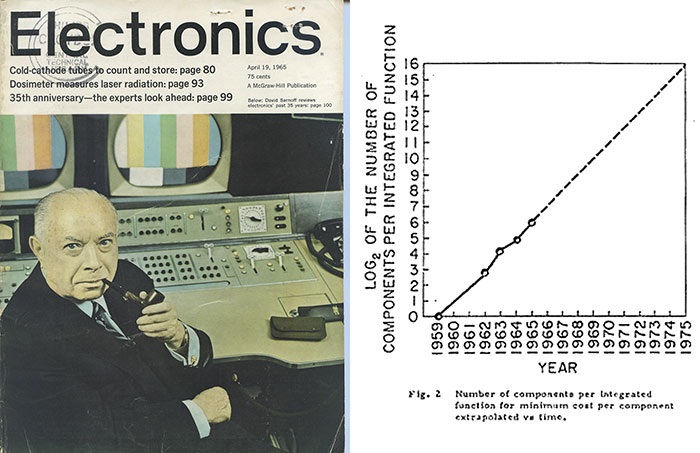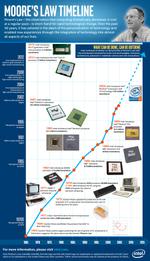Sunday, 19th April marked the 50th anniversary of Moore's Law. On 19th April 1965 an editorial article written by Gordon E. Moore was published in Electronics magazine's 35th anniversary issue. In the article Moore first predicted that transistors would decrease in cost at an exponential rate and increase in performance. This was based upon Moore's observation, working in R&D at Fairchild Semiconductor three years before going on to co-found Intel, that the number of components per integrated circuit was doubling every year. The result of the forecast panning out would be cheaper and ever more powerful computers as time went by.
Moore's forecast was revisited at the IEEE International Electron Devices Meeting in 1975 where Moore said that, from 1980 onwards, the doubling of semiconductor complexity would slow down to take two years.

Over the years Moore's Law, both an observation and forecast, has been a spur to the industry to remind engineers and scientists of what is possible and help draft medium to long term goals. Moore admits he didn't expect the forecast to be very accurate but said he was just commenting upon a general trend. As it was adjusted in 1975, Moore again expects the law to hit a speed-bump in the coming decade.

What might happen in the next 50 years? Unfortunately Intel posed that question yet, as mentioned above, Intel co-founder Moore expects progress to slow down somewhat. Ten years ago Moore said about the law; "It can't continue forever... the nature of exponentials is that you push them out and eventually disaster happens." Also we must ask how can miniaturisation continue as transistor sizes hurtle towards atomic levels?

In a recent update from Intel concerning chip design/manufacture at the International Solid-State Circuits Conference (ISSCC) in San Francisco the firm did have some positive news about adhering to Moore's law a little longer. Intel senior fellow Mark Bohr said that there is still headroom for the law to apply down to at least 7nm processors. After that the semiconductor industry might need "expensive, esoteric manufacturing methods like ultraviolet lasers".
Intel has compiled lots more videos, infographics and articles to mark the 50th anniversary of Moore's Law.
click to zoom in














